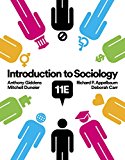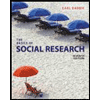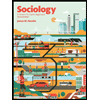Genn 499 Week 5 Final Paper
docx
keyboard_arrow_up
School
University Of Arizona *
*We aren’t endorsed by this school
Course
460
Subject
Sociology
Date
Jan 9, 2024
Type
docx
Pages
15
Uploaded by Beccamcg1031
1
International Drug Trafficking
Rebecca McGuire
The University of Arizona Global Campus
GEN499: General Education Capstone
Dr. Joseph Marangell
November 19, 2023
Introduction
The phenomenon of drug trafficking has become profoundly entwined with our contemporary global society, and as a result, it is able to exercise a substantial influence in a variety of different spheres. During the last four decades, there has been an appreciable spike in the number of deaths that occur all over the world as a direct result of the prevalence of drug trafficking. It has now created a detrimental effect across the planet. Because of the way of life that is associated with it, the underground market is to blame for a considerable number of deaths
that occur in the present day. Despite this, it has developed into a lucrative option that paves the way for individuals to significantly improve their financial conditions. The effects of international drug trafficking extend to the workings of political systems, the workings of economic institutions, the workings of social fabric, and the workings of local communities. The magnitude of the damage done by drug trafficking on a worldwide scale is a good indicator of the effect that it has had on humankind in general. Different national opinions on how to deal with drug trafficking are mostly to blame for the lack of unanimity that exists regarding this issue. More research on international drug trafficking is required to provide a complete understanding of the hazards and health repercussions of this worldwide epidemic. Despite extensive endeavors, such as the War on Drugs, to address the illicit drug market,
minimal or insignificant consideration has been given to the underlying matter of supply and demand. A considerable number of people roam the streets with a strong dependence on narcotics, therefore, the legalization of any kind of drugs is not the optimal choice. This study aims to analyze strategies to diminish the demand for illicit substances with the objective of mitigating drug trafficking.
Problem
2
The issue of international drug trafficking is a worldwide societal concern that has led to significant disparities in the United States. The illicit drug market has a significant worldwide presence, impacting both developed and impoverished nations on a large scale. International drug trafficking surpasses the value of many essential legal commodities in the world economy, with an estimated annual worth ranging from $300 billion to $400 billion (Frtizvold, 2019). In the presence of supply and demand, drug dealers will persist in distributing illicit narcotics for economic gain. To effectively stop the dissemination of these drugs, it is imperative that we tackle the root cause, which is the desire for them. For decades, illegal narcotics have been unlawfully carried across various parts of the United States. The United States has been impacted by the global problem of illegal drug trade, with a recent increase in drug-related mortality and overdoses. As a result, this has become a national health issue for the entire country. Cocaine, fentanyl, marijuana, pain relievers, and methamphetamine are among the substances discussed. Marijuana usage has increased since 2007. In 2013, the number of current users reached 19.8 million, accounting for around 7.5 percent of people aged twelve and up. This was an increase above the previous year's record of 14.5 million (NIDA, 2015). In recent years, the prevalence of cocaine consumption has declined.
More than 20,000 Americans died from fentanyl in 2016, and this number is climbing, according
to the CDC. Fentanyl and its analogs are imported through many avenues, including direct shipments from Chinese companies to US online buyers. Injectable drug users' Hepatitis B, C, and HIV rates. The survey says visitors to India's drug trafficking routes are more susceptible to infectious diseases. A study Conducted by Datta et al. (2006) on how global drug trafficking spreads infectious illnesses and further blames drug trafficking organizations and needle sharers for these infections (p. 1955). It recognizes that 3
Your preview ends here
Eager to read complete document? Join bartleby learn and gain access to the full version
- Access to all documents
- Unlimited textbook solutions
- 24/7 expert homework help
drug-related infectious diseases constitute a complicated global epidemic that is difficult to control and mitigate.
An examination into the history of heroin and opiate manufacture and distribution done by Paoli et al. (2012). It also examines key international drug governance issues and their worldwide effects. The study suggests that reintroducing previous restrictions may change drug trafficking techniques, allowing each nation to modify them to its needs (p. 933). Additionally, these artifacts' limitations and therapeutic effects must be recognized. In the US, narcotics and crime are strongly linked. You could be charged with drug possession, production, or distribution. Drugs are being transferred via cars, bodies, and luggage to confound police. Additionally, medications are shipped by mail. Drugs have been smuggled between Mexico and America underground. It is believed that Mexico, our neighbor, supplies most of our drugs. Human trafficking, corruption, money laundering, and guns affect drug trafficking. These considerations make drugs damaging to America. In addition to rising crime rates, health issues among drug users and pregnant women, and frequent overdoses and murders targeting addicts, we must address international smuggling to prevent its widespread impact. The
Substance Abuse and Mental Health Services Administration estimates that 400,000 US newborns are exposed to prenatal alcohol and drugs. This accounts for 10% of live births and often requires child welfare. According to the National Survey of Child and Adolescent Well-
Being (NSCAW), 61% of babies and 41% of older children in out-of-home care come from alcohol- or drug-using families. Z. Laris et al (2018). As drug-related crime and health issues rise, all nations must work together to improve
our world, communities, and families. Drug use and abuse raise ethical and social difficulties.
Today's conflicting drug standards and attitudes make these issues tough to solve. Standards may
4
be subjective due to social, religious, and personal factors. Different standards and attitudes in a
society might lead to frequent drug misuse disputes. Marijuana is becoming increasingly legal in
many places and painkillers are prescribed to patients, but both are drugs. Gavrilova and Zoutman claim that Medical Marijuana Laws (MML) diminish violent organized crime by Mexican Drug Trafficking Organizations (DTO), especially in border states. Solid evidence supports the claim. Local farmers' medical marijuana clinics reduce Mexican drug traffickers' marijuana demand, lowering crime rates. Mexican drug traffickers' financial constraints when hiring violent criminals due to a limited market in certain areas may have reduced violent crime rates. Medical Marijuana Laws (MMLs) may also eliminate social stigma and increase marijuana use among non-licensed users. This benefits drug traffickers. Data suggests a regulated system with local farmers as providers will be allowed.
Thompson (2016) examines how drug offenses affect skills and societal development. The study contrasts drug offender and non-offender economic advancement based on education and employment. Thompson (2016) advises legislators to examine these factors while creating new drug legislation. The paper's author supports his claims with statistics. Drug-using households and communities make it harder for low-income children to escape poverty. Despite the many options, their behavior and decisions are more likely to be influenced by their surrounding environment's teachings. Drug trafficking is a multibillion-dollar industry with primarily negative outcomes such as health issues, increasing crime rates, addiction, and violence. It is critical that all nations work together to develop a comprehensive strategy to eliminate or decrease these problems. Drug trafficking then separates and harms families, communities, and society, resulting in an increase in crime rates. In the United States, the prevalence of drug overdose and use is disturbingly high, 5
resulting in severe health issues and even fatalities. Furthermore, many illicit substances are being illegally brought into our country, primarily through Mexico, but increasingly through online platforms, posing a rising issue for the US.
By expanding drug use, the international drug trade has a negative impact on both the economy and individuals. The negative repercussions of drug use and addiction are visible in an overburdened criminal system, a taxed healthcare system, reduced productivity, and environmental degradation. Unfortunately, drug trafficking is frequently accompanied by an increase in general criminal behavior. Drug trafficking has been recognized as a key indication of terrorism, according to the conclusions of a study done by Omelicheva and Markowitz (2018).
Nonetheless, the research revealed that the link between drugs and terrorism is complex, diverse,
and strongly linked to the government. Additionally, drug traffickers are frequently involved in human trafficking. Treating drug users reduces global drug trafficking better than imprisoning them. Prisons hold many offenders and addicts without resolution. The 2002 poll found 56% thought drug treatment was underfunded. "In 2014, 48.7% of federal convicts were imprisoned for drug charges." Giordano (2016). Help should tighten rules, but relapse must end. Most first-time drug offenses are jailable for 3–5 years. "Drug courts do represent a promising breakthrough, and they
are in use in a number of jurisdictions across the country, including here." Five years ago, District Attorney Charles Hynes began the Drug Treatment Alternatives to Prison program, which has expanded to neighboring boroughs. B felony drug dealers who sell to undercover officers can go to prison, Phoenix House, or Samaritan Village. Despite nonviolent convictions, 15–24-month treatment program completers had charges reduced. " Anderson (1996). Program performance showed that training reduced recidivism.
6
Your preview ends here
Eager to read complete document? Join bartleby learn and gain access to the full version
- Access to all documents
- Unlimited textbook solutions
- 24/7 expert homework help
The US must finance school programs to educate and dissuade users, especially kids. "More than one-half of the rural young adults (18-25) and more than one-fourth of rural youth (12-17) had used marijuana at least once. “Response Analysis Corp. (1981). Reviving DARE helps students learn drug sources, why they are terrible, and the repercussions of breaking the law. DARE programs often boost police and executive trust. Most elementary schools had this, but high school removed it. All youngsters must be reached. Tightening border barriers and punishing large drug possessions can also stop drug trafficking. When other nations struggle, survival is hard. Recent Mexican corruption is high. Convincing evidence reveals a corrupt Mexican state official drug trafficking agreement. The headlines cited top officials in federal agencies fighting drugs and organized crime, port and prison officials, military and police commanders, governors and gubernatorial candidates, state police, investigators, and district attorneys, mayors and city officials, and hundreds of municipal police for aiding and abetting organized crime. S.D. Morris (2012). If they do not comprehend, can we mend society by presenting our thoughts to reduce drug misuse and trafficking one by one? US citizens fear Mexican drug trafficking. They smuggle drugs by foot, car, and with pirates and other gear.
Summer and holidays are smuggling seasons because traffic limits car checks. Only in emergencies do they use dogs to sniff out drugs. Extra sources are always welcome. Another option is to hire more border patrol and state troopers for cities along the Mexican border to protect them from violence and drug smuggling, which occurs frequently in nearby cities, and to serve our community. The DEA reported in 2013 that marijuana smuggling had "occurred at consistently high levels over the past decade, primarily across the US-Mexico border," with "no specific hope of halting the flow." BIER, D. 2019. We must stop the drug flow across Mexico's border, which has persisted for years.
7
Tujillo et al. (2019) examine the possible consequences of legalizing a regulated substance, with a focus on the likelihood of heightened usage among teenagers because of reduced expenses and improved availability. However, data indicates that youngsters are more inclined to ingest legally prescribed drugs rather than illegal substances. Granting legal status to narcotics such as marijuana and heroin would place them on par with alcohol and tobacco. In contemporary times, it is commonplace for a member of a family to engage in substance abuse, either with drugs or alcohol. Whether their children continue the family's inherited inclination for drug use has less impact. Should we persist in engaging in a protracted struggle that has endured for almost four decades, or should we opt to cease our efforts? To bolster economic growth, enact the legalization of all narcotics and increase taxation. Implementing this technique will result in a reduction in violence, leading to the resolution of the
issue.
Ethical Concerns
The ethical repercussions of this decision will include the strengthening of our societal rights and the guarantee that our health will receive the utmost attention, both in terms of support
and protection. It is essential to aid people who need or need support to address their physical, mental, and emotional well-being. This can be accomplished by providing aid to people who seek or require support. This guarantees that they are not merely treated as statistical data but rather that they receive thorough attention. When they notice signs of drug use, it is vital that doctors and other medical professionals stay actively engaged in the patient's treatment. This is a moral necessity. Receiving treatment is important, not only for the individual, but also for their family members and other loved ones. It is estimated that 25% of people in the United States 8
who are dependent on drugs or alcohol are currently participating in some sort of rehabilitation program. According to the findings of certain studies, medical personnel frequently fail to notice or
overlook signs of substance addiction in their patients, and when confronted with the issue, they treat it in an insufficient manner. The information provided by the user in their text is lacking and
does not offer any assistance. As a matter of concern for public health, rethinking the United States' strategy for combatting the abuse of drugs is necessary (The Lancet, 2001). Ethically speaking, maintaining vigilance, and treating any potential health risks can significantly improve the health of every individual and family in the United States of America. Despite the construction of a wall or the enhancement of border security, there is still a risk that corrupt practices will continue to exist at the border, and people will still try to sneak illegal drugs into the country. This poses an ethical concern. There are a variety of methods available to put a stop to drug traffickers; but, when one of these methods is defeated or circumvented, it becomes difficult to successfully intercept incoming illegal goods. Frequently, illegal narcotics are moved by smuggling them in amongst other things, such food, decorations, furniture, or even car components. This is done to avoid detection by law enforcement. When goods are masked, it is far more challenging to detect whether they are legitimate. Because of this, it is possible to accidentally cause damage to another person's property by erroneously supposing that they are transporting illegal substances. The absence of technical breakthroughs in the identification of narcotics such as fentanyl,
which is more potent than heroin and presents greater hurdles in terms of smuggling detection, is
another ethical concern that has been raised. Border patrols typically have an elevated level of expertise when it comes to apprehending those who engage in the trafficking of substantial 9
Your preview ends here
Eager to read complete document? Join bartleby learn and gain access to the full version
- Access to all documents
- Unlimited textbook solutions
- 24/7 expert homework help
quantities of illegal goods. Tablets and medications, on the other hand, present a unique obstacle because it is significantly more challenging for sniffer dogs to identify them at international checkpoints. Abuse of addictive substances has negative repercussions for all parties involved, including the addicts themselves, their families and communities, and our country. Substances can transform the perceptions, beliefs, and moral traits of persons. The international illegal drug trade has been a significant threat to the United States for an exceptionally long time, inflicting devastation on our country's citizens, families, and communities. Both the potency and the way drugs taste have evolved dramatically over the course of human history. To combat drug trafficking and the impacts that are linked with it, such as criminal activity, public health problems, financial burdens on the country, and the requirement for rigorous border control, it is essential to be current on the most recent treatments. A person may become addicted to drugs because of several factors, including familial, societal, and peer influences, as well as the use of drugs for reasons other than their intended therapeutic purpose. The decision to become addicted is not necessarily one that is made voluntarily. To aid those who are engaged in the use of drugs, or the abuse of drugs, stringent legislation and broad support services need to be established. The end goal of these efforts should be to achieve sobriety and prevent the development of this destructive phenomenon across the United States. People who grow up in homes with drug addicts as parents have a statistically increased risk of developing a substance abuse problem of their own. To completely eradicate drug use before it becomes a widespread epidemic, it is essential that we engage with individuals of all ages, communities, races, and countries. Conclusion
10
In conclusion, the problem of international drug trafficking is both complicated and difficult to solve, and it poses a significant danger to the safety and stability of countries around the world. Throughout its history, drug trafficking has had a significant impact on public health, economic well-being, and social harmony, as well as its contemporary scope and ramifications. The international community must work together to find a solution to this problem by implementing effective measures that tackle the root cause of drug trafficking and weaken the activities of criminal organizations participating in the illegal drug trade. If we take this step, we will be able to reduce the negative impacts of drug trafficking and create a world that is safer and
healthier for everyone.
11
References:
Anderson, G. M. (1996). The crisis in drug treatment. America, 174(9), 10. Retrieved from http://search.ebscohost.com.proxy-library.ashford.edu/login.aspx?
direct=true&AuthType=ip,cpid&custid=s8856897&db=f5h&AN=9603205119&site=ehost-live
BIER, D. (2019). The Wall Won’t End Pot Smuggling at the Border. Legalization Will. Reason, 50(11), 22. http://search.ebscohost.com.proxy-library.ashford.edu/login.aspx?
direct=true&AuthType=ip,cpid&custid=s8856897&db=f5h&AN=134751107&site=ehost-live
Fritzvold,. E. D., (2019). International Drug Trafficking. Retrieved from: DOI:1093/OBO/9780195396607
https://www.oxfordbibliographies.com/view/document/
obo9780195396607/obo-9780195396607-0126.xml
Gavrilova, E., Kamada, T., & Zoutman, F. T. (2014). Is Legal Pot Crippling Mexican Drug Trafficking Organizations? The Effect of Medical Marijuana Laws on the US Crime. SSRN Electronic Journal. https://doi:10.2139/ssrn.2350101
Giordano, V. A. (2016). Treatment or Jail. Corrections Today, 78(6), 26. Retrieved from http://search.ebscohost.com.proxy-library.ashford.edu/login.aspx?
direct=true&AuthType=ip,cpid&custid=s8856897&db=f5h&AN=119184080&site=ehost-live
Harrell, A. V., Cisin, I. H., & Response Analysis Corp., P. N. (1981). Drug Abuse in Rural America. Treatment Research Report. Retrieved from 12
Your preview ends here
Eager to read complete document? Join bartleby learn and gain access to the full version
- Access to all documents
- Unlimited textbook solutions
- 24/7 expert homework help
http://search.ebscohost.com.proxylibrary.ashford.edu/login.aspx?
direct=true&AuthType=ip,cpid&custid=s8856897&db=eric&AN=ED209571&site=ehost-live
MORRIS, S. D. (2012). Corruption, Drug Trafficking, and Violence in Mexico. Brown Journal of World Affairs, 18(2), 29–43. http://search.ebscohost.com.proxylibrary.ashford.edu/login.aspx?
direct=true&AuthType=ip,cpid&custid=s8856897&db=a9h&AN=85090606&site=ehost-live
National Institute on Drug Abuse. (2015) Nationwide Trend. Drug Facts. Publications. Retrieved
at: https://www.drugabuse.gov/publications/drugfacts/nationwide-trends
Paoli, L., Greenfield, V., & Reuter, P. (2012). Change is Possible: The History of the
International Drug Control Regime and Implications for Future Policymaking. [Article].Substance Use & Misuse,47(8/9), 383-406. Retrieved from
http://eds.a.ebscohost.com.proxy-library.ashford.edu
Rethinking america's "war on drugs" as a public-health issue. (2001). The Lancet, 357(9261), 971. Retrieved from https://search-proquest-com.proxy library.ashford.edu/docview/199099841?
accountid=32521
Sibnarayan Datta, Arup Banerjee, Partha K. Chandra, Pradip K. Mahapatra, Shekhar Chakrabarti, & Runu Chakravarty. (2006). Drug Trafficking Routes and Hepatitis B in Injection 13
Drug Users, Manipur, India. Emerging Infectious Diseases, 12(12), 1954–1957. https://doi-
org.proxy
Thompson, O. (2016). Drug policy and intergenerational income mobility in the United States [Journal Article]. Contemporary Economic Policy, 34(1), 127-145. Retrieved from http://eds.a.ebscohost.com.proxy-library.ashford.edu
Tujillo, C. A., Tujillo, A., & Obando, D. (2019). Does it matter if drugs are legal? Legalizing decreases the influence of beliefs in a moral order in consumption among adolescents. Addiction Research & Theory, 27(6), 472-481. https://doi-org.proxy-library.ashford.edu/10.1080/16066359.2018.1544626
The Pros and Cons of the Federal Response to the Drug Addiction Crisis. (2018). Congressional Digest, 97(2), 18. http://search.ebscohost.com.proxylibrary.ashford.edu/login.aspx?
direct=true&AuthType=ip,cpid&custid=s8856897&db=f5h&AN=127611257&site=ehost-live
U.S. Department of Justice, (2010). Impacts of Drugs on a Society. Retrieved from: https://www.justice.gov/archive/ndic/pubs38/38661/drugImpact.htm\
Waite, D., Greiner, M. V., & Laris, Z. (2018). Putting Families First: How the Opioid Epidemic Is Affecting Children and Families, and the Child Welfare Policy Options to Address It. Journal of Applied Research on Children, 9(1). Retrieved from 14
http://search.ebscohost.com.proxylibrary.ashford.edu/login.aspx?
direct=true&AuthType=ip,cpid&custid=s8856897&db=eric&AN=EJ1205774&site=ehost-live
15
Your preview ends here
Eager to read complete document? Join bartleby learn and gain access to the full version
- Access to all documents
- Unlimited textbook solutions
- 24/7 expert homework help
Related Documents
Recommended textbooks for you

Social Psychology (10th Edition)
Sociology
ISBN:9780134641287
Author:Elliot Aronson, Timothy D. Wilson, Robin M. Akert, Samuel R. Sommers
Publisher:Pearson College Div

Introduction to Sociology (Eleventh Edition)
Sociology
ISBN:9780393639407
Author:Deborah Carr, Anthony Giddens, Mitchell Duneier, Richard P. Appelbaum
Publisher:W. W. Norton & Company

The Basics of Social Research (MindTap Course Lis...
Sociology
ISBN:9781305503076
Author:Earl R. Babbie
Publisher:Cengage Learning

Criminalistics: An Introduction to Forensic Scien...
Sociology
ISBN:9780134477596
Author:Saferstein, Richard
Publisher:PEARSON

Sociology: A Down-to-Earth Approach (13th Edition)
Sociology
ISBN:9780134205571
Author:James M. Henslin
Publisher:PEARSON

Society: The Basics (14th Edition)
Sociology
ISBN:9780134206325
Author:John J. Macionis
Publisher:PEARSON
Recommended textbooks for you
 Social Psychology (10th Edition)SociologyISBN:9780134641287Author:Elliot Aronson, Timothy D. Wilson, Robin M. Akert, Samuel R. SommersPublisher:Pearson College Div
Social Psychology (10th Edition)SociologyISBN:9780134641287Author:Elliot Aronson, Timothy D. Wilson, Robin M. Akert, Samuel R. SommersPublisher:Pearson College Div Introduction to Sociology (Eleventh Edition)SociologyISBN:9780393639407Author:Deborah Carr, Anthony Giddens, Mitchell Duneier, Richard P. AppelbaumPublisher:W. W. Norton & Company
Introduction to Sociology (Eleventh Edition)SociologyISBN:9780393639407Author:Deborah Carr, Anthony Giddens, Mitchell Duneier, Richard P. AppelbaumPublisher:W. W. Norton & Company The Basics of Social Research (MindTap Course Lis...SociologyISBN:9781305503076Author:Earl R. BabbiePublisher:Cengage Learning
The Basics of Social Research (MindTap Course Lis...SociologyISBN:9781305503076Author:Earl R. BabbiePublisher:Cengage Learning Criminalistics: An Introduction to Forensic Scien...SociologyISBN:9780134477596Author:Saferstein, RichardPublisher:PEARSON
Criminalistics: An Introduction to Forensic Scien...SociologyISBN:9780134477596Author:Saferstein, RichardPublisher:PEARSON Sociology: A Down-to-Earth Approach (13th Edition)SociologyISBN:9780134205571Author:James M. HenslinPublisher:PEARSON
Sociology: A Down-to-Earth Approach (13th Edition)SociologyISBN:9780134205571Author:James M. HenslinPublisher:PEARSON Society: The Basics (14th Edition)SociologyISBN:9780134206325Author:John J. MacionisPublisher:PEARSON
Society: The Basics (14th Edition)SociologyISBN:9780134206325Author:John J. MacionisPublisher:PEARSON

Social Psychology (10th Edition)
Sociology
ISBN:9780134641287
Author:Elliot Aronson, Timothy D. Wilson, Robin M. Akert, Samuel R. Sommers
Publisher:Pearson College Div

Introduction to Sociology (Eleventh Edition)
Sociology
ISBN:9780393639407
Author:Deborah Carr, Anthony Giddens, Mitchell Duneier, Richard P. Appelbaum
Publisher:W. W. Norton & Company

The Basics of Social Research (MindTap Course Lis...
Sociology
ISBN:9781305503076
Author:Earl R. Babbie
Publisher:Cengage Learning

Criminalistics: An Introduction to Forensic Scien...
Sociology
ISBN:9780134477596
Author:Saferstein, Richard
Publisher:PEARSON

Sociology: A Down-to-Earth Approach (13th Edition)
Sociology
ISBN:9780134205571
Author:James M. Henslin
Publisher:PEARSON

Society: The Basics (14th Edition)
Sociology
ISBN:9780134206325
Author:John J. Macionis
Publisher:PEARSON